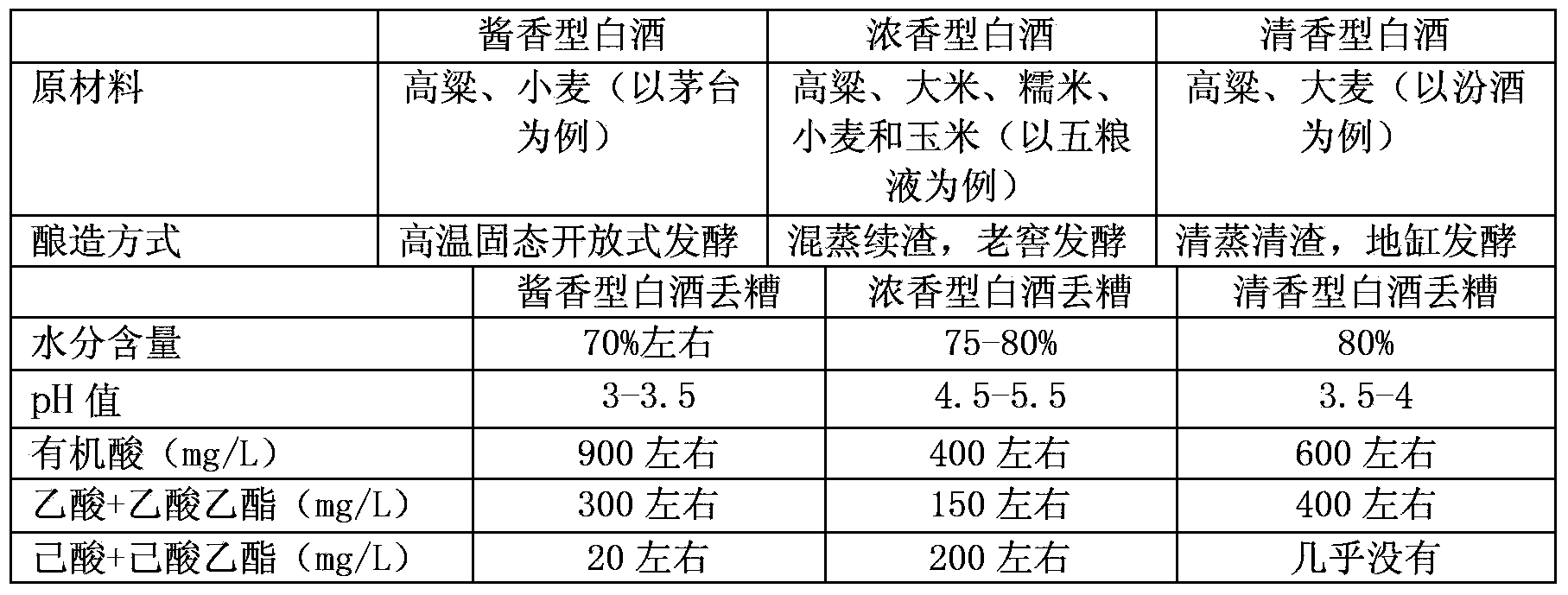Method for ecological conversion of fen-flavor white spirit vinasse musca domestica larva
A technology for fragrant liquor and housefly, applied in animal feed, animal feed, application, etc., can solve the problems of different quality of distiller's grains, high sewage and alcohol content
- Summary
- Abstract
- Description
- Claims
- Application Information
AI Technical Summary
Problems solved by technology
Method used
Image
Examples
Embodiment 1
[0046] Embodiment 1 of the present invention: the method for the ecological transformation of the housefly larvae in the fragrant-flavor liquor (such as Xinghuacun Fenjiu) comprises the following steps:
[0047] (1) Collection of fly species and clean breeding and domestication: Collect local wild houseflies, carry out biological identification according to Fan Zide's "Key Flies Common Flies in China", and place them in 80cm×30cm×30cm stainless steel wire clean insect breeding cages. Milk powder and brown sugar in a mass ratio of 1:1 were raised, and larvae were reared with bran clean. The indoor temperature was 20°C-30°C, the relative humidity was 60%-80%, and the light rhythm was subject to the local environment. Fly eggs were collected daily and inoculated with water. Raised in about 65% wheat bran, on the 5th day, the 3rd instar larvae with a body weight of ≥ 20 mg were collected and pupated in 15% water-containing bran, and then oval-shaped pupae with a length of about 6.0...
Embodiment 2
[0055] Embodiment 2 of the present invention: the method for the ecological transformation of the housefly larvae of the fragrant-flavored liquor comprises the following steps:
[0056] (1) Collection of fly species and clean breeding and domestication: collect local wild house flies, carry out biological identification according to Fanzide's "Key Flies Common Flies in China", and then follow the natural breeding environment of local house flies (temperature about 30°C, humidity about 60°C). %, light, etc.) conditions, adult flies were raised with milk powder and brown sugar in a mass ratio of 1:1, and larvae were reared with bran cleaning, and were naturally passaged for more than 5 generations, so that they had stable reproductive characteristics in an intensive breeding environment.
[0057] (2) Induction and stabilization of fly strains adapted to the transformation from discarded grains of fragrant liquor: the housefly larvae after domestication in step (1) were induced an...
Embodiment 3
[0064] Embodiment 3 of the present invention: the method for the ecological transformation of the housefly larvae of the fragrant-type liquor may further comprise the steps:
[0065] (1) Collection of fly species and clean breeding and domestication: collect local wild house flies, carry out biological identification, and then feed the adult flies with milk powder and sugar in a mass ratio of 1:1. It has stable reproductive characteristics under intensive rearing environment.
[0066] (2) Induction and stabilization of fly strains adapted to the transformation from discarded grains of fragrant liquor: the housefly larvae after domestication in step (1) were induced and cultured with discarded grains of fragrant liquor. The ambient temperature was 20-30°C, and the relative humidity was 60%-80%. %; the water content of the inductive discarded grains culture material is 50%-80%, and the ratio gradually increases from discarded grains: wheat bran = 1:9 to discarded grains: wheat b...
PUM
 Login to View More
Login to View More Abstract
Description
Claims
Application Information
 Login to View More
Login to View More - R&D
- Intellectual Property
- Life Sciences
- Materials
- Tech Scout
- Unparalleled Data Quality
- Higher Quality Content
- 60% Fewer Hallucinations
Browse by: Latest US Patents, China's latest patents, Technical Efficacy Thesaurus, Application Domain, Technology Topic, Popular Technical Reports.
© 2025 PatSnap. All rights reserved.Legal|Privacy policy|Modern Slavery Act Transparency Statement|Sitemap|About US| Contact US: help@patsnap.com


